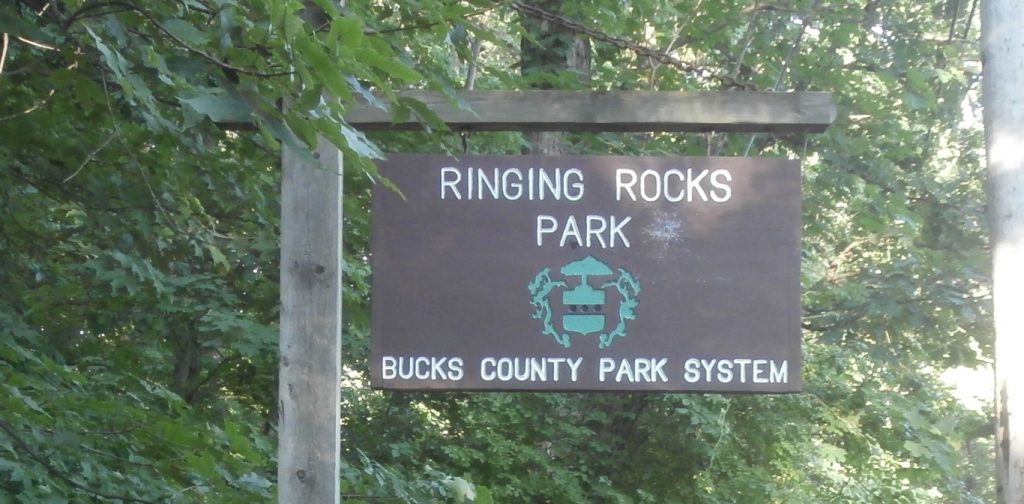Ringing Rocks in Pennsylvania aka sonorous stones or lithoponic stones are stones that resonate like bells when someone hit it. These stones are scattered in several places, such as Ringing Rock Park, in Upper Black Eddy, Bucks County, Pennsylvania; Ringing Rocks Kiandra, New South Wales; and Bell Rock Range in Western Australia. This stone can also be used for idiophonic musical instruments, the type is called lithopones.
One of these stone places is in Pennsylvania, United States. Chunks of rock gather into unique piles of rocks. The stones are spread from seven to eight hectares and produce a distinctive metallic sound when struck with a hammer or a stone. These rock chunks have been known by Native Americans for centuries, and then continued with the first white people in the mid-1700s.
The rock produces a loud and echo sound. Scientists were confused by this strange phenomenon. There are more than dozens of stone rings identified in the Pennsylvania area, but the majority of them is private property. Some of these rock sites in northern Pennsylvania that can be directly accessed by the public are Ringing Rocks County Park, Ringing Hill Park, Stony Garden.
Scientists Researching for Ringing Rocks in Pennsylvania
For years scientists and geologists have tried to find out and several experiments have been carried out on these rocks. However, unfortunately, none of them can provide credible theories about the ability to ring from a rock or how it can form.
A mineral and botanist named Edgar T. Wherry (1885-1982) became interested in ringing stones while teaching at Lehigh University. From the results of his research, he gave the theory that the ring was created because of the diabase rock texture (dolite) and supported by other rocks. He identified the rock as a type of felsenmeer (sea stone).
This strange rock has attracted the attention of many, even a local industrialist and guardian of Franklin & Marshall College named Benjamin Franklin Fackenthal (1851-1941). He was indeed not a professional geologist, but his interest in the rock phenomenon and making observations in all rock fields.
Richard Faas, a geologist from Lafayette College conducted a study in 1965 by bringing several stones to the laboratory for testing. From his research, it was found that when the stones were hit, they created a series of tones at a frequency lower than the sound that the human ear could hear. The tones of rocks that can be heard are only produced because of the interaction with each other.
Although Faas explained the nature of the tone, he still could not identify certain physical mechanisms in the stone that made him special. Like stones in general, the rocks are also made of a volcanic material called diabase, consisting of iron and other hard minerals. However, there are other compositions that make these rocks different.
Ringing Rocks in Pennsylvania is a unique phenomenon
The existence of ringing stones has created a great controversy regarding the origin of the ringing sounds produced by these rocks. The size, shape, and way the stones are stacked certainly affects the sound made, but not for that reason why the stone can have the ringing ability.
Some scientists believe that there are certain layers in the rock that can cause them to ring loudly. Others believe there is a stress reaction in the rock that triggers the appearance of ringing sounds.
Most of the rock piles were identified as a result of destroyed mountain avalanches. But, strangely, the stones are on a hill, not under the mountain slope. That is, these rocks are not from landslides and there is no evidence that leads to the glacier.
In addition, another oddity of this stone is that almost no vegetation or plants live in the surrounding area. There are not even insects living in the rocky area. The place has a depth of 10 feet, the temperature is hotter than the surrounding forest and not much food or shelter can be visited.
There is much more uniqueness of this place that is difficult to understand even to scientists. The charm of these rocks is able to attract thousands of tourists every year who never get bored to pound on the stone, and some even find ways to play these stones as musical instruments.
The more people want to visit this place, the greater the challenge to maintain its sustainability. Environmental awareness of each individual will greatly help efforts to preserve the location of ringing rocks in Pennsylvania.








